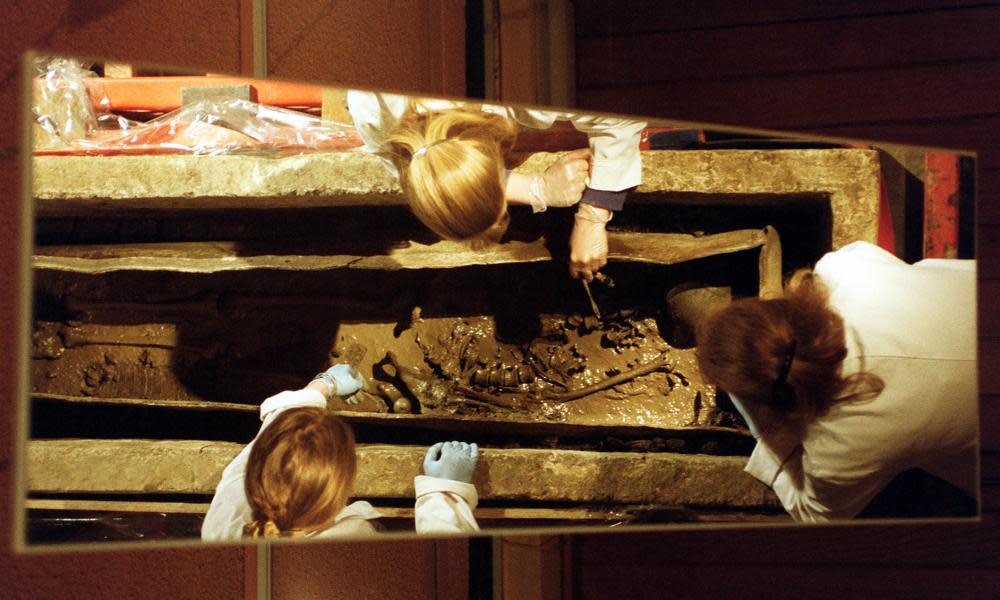Posh Roman London teen's skeleton to return to her final resting place

The skeleton of a young Roman Londoner will soon return to within 100 yards of the site where she was buried more than 1,700 years ago – with her greatest treasure, a stack of seven bronze bangles – heaped up on her breast.
She was the most unusual of a group of Roman bodies excavated in 1979 on the site of a new building at Bart’s hospital, in Roman times part of a cemetery just outside the walls on the eastern edge of the city. Although probably still a teenager, she had a high-status burial in a wooden coffin – only the metal nails survived as evidence – with other possessions including two bronze finger rings and a little bell. Over the centuries, the corroding bronze had stained green the bones it lay on.
“With burials from this period, we get very excited if we find a single pot, so she really was an unusual and exciting find,” Becky Redfern, curator of human osteology at the Museum of London, said.
The fragile bones of the slight woman, who would have been about 5ft 4in, average height for her time, may go on display for the first time when the huge collection of human remains, the largest in the world from a single city, moves with the museum to its new home in the old Smithfield Market buildings, due to open in 2020.
Redfern said she hoped they would have space for a dedicated human remains gallery, as well as a purpose-built store for the remains of more than 20,000 individuals including victims of war, famine and plagues such as the Black Death.
The collection has recently expanded to take in hundreds of bodies found as the Crossrail tunnel was dug across the capital, including many who died in the Great Plague of 1665. Some of these skeletons were assumed to be victims in the Black Death, but scientists have recently discovered that they actually starved to death in one of several major famines in the14th century.
It proved impossible to extract the Roman woman’s DNA, which could have revealed her hair and eye colour, and her skeleton was partly destroyed by Victorian construction work, but analysis of the radioactive isotopes in her excellent teeth showed that while Roman cemeteries often include individuals from across Europe and Africa, she was a Londoner born and bred. She had a good diet including fruit and vegetables, meat, and river and imported marine fish.
Fewer than 4% of burials were in her 18 to 25 age group and Redfern said she had been unable to determine any obvious cause of death – there are no marks of violence or traces of disease such as tuberculosis on her bones. “Whoever she was, she was a Londoner, she died young, and she was obviously a valued member of her society,” Redfern said.

 Yahoo News
Yahoo News 
